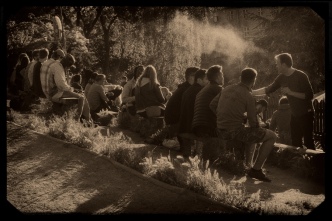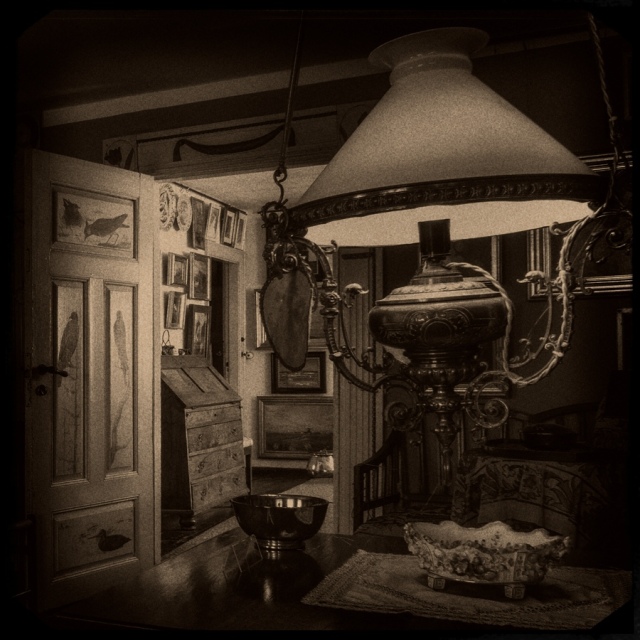At the Northern tip of Jutland, in the town of Skagen, the artists Michael and Anna Ancher gathered around them a community of painters.
In their house in Skagen they painted light filled canvases showing the grace and strength of the community clinging to the coast of that sun bright place.
Strangely, though, their house is dark and lightless. Even the studio Michael Ancher built for himself in 1913 is dark. The rooms are small and crammed with furniture and paintings and the sun seems never to penetrate through the small windows.
Anna Ancher made a painting in about 1886 called “The Girl In The Kitchen”. It’s bright and beautiful and we look into the light over the girl’s shoulder as she prepares a meal. Her stance and the way we are spying on her without her knowledge remind me of the Copenhagen painter Vilhelm Hammershoi although Hammershoi seems to occupy a tonal landscape somewhere between the Anchers’ light filled paintings and their dark rooms.


There is a photograph of Hammershoi made sometime between 1898 and 1909. In it he stands in a courtyard which has recently been swept after heavy snow. He has his hands in his pockets and he casually watches us watching him from a distance of a hundred years.


Above him his wife, Ida, stands looking out of a high window.
I love Hammershoi’s work for it’s stillness and quiet.
Many of the works, made in the apartment he is standing beside in the photograph, have Ida in them but she is almost always seen from behind like Anna Ancher’s girl. We watch her as she gets on with her life or marvel at the line of her neck as she looks out of windows: looks out of the window she fills in the photograph so that what we see is the front plane of a scene Hammershoi studied over and over again from within the house. He put what he saw then and what it meant to him onto canvas for us.
The apartment is at Strandgarde 30 in the Christianshaven district of Copenhagen and we must have passed it during our first walk around the city. We had to drive there again to see the place and reclaim Hammershoi’s calm.
Our first visit had taken us into Christianshaven to Christiania or Freetown Christiania as it is called. Searching for a remnant of good old 1960’s Hippy culture we slid through a market of drug sellers on the aptly named Pusher Street.
The trade was tolerated until 2004 since when attempts at introducing measures to normalise the neighbourhood have led to conflicts and police raids which seem to have had questionable effect.
In 2005 one resident was shot and killed and others injured in a gang attack over the control of the Copenhagen cannabis market. In 2009 a hand grenade was tossed into the crowded Cafe Nemoland and in 2016 someone who was resisting arrest for cannabis sales pulled out a gun and shot three people.
There was a pleasant cafe. Beyond the cafe people yelled at each other and young, purposeful, men stopped tourists, spoke quietly to them and watched as they deleted photographs from their cameras. I made a couple of photographs with the knowledge of the minders speaking to them with a lightness I did not feel.




